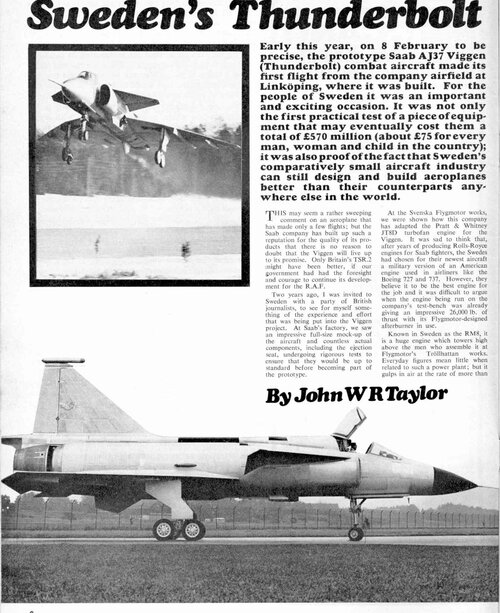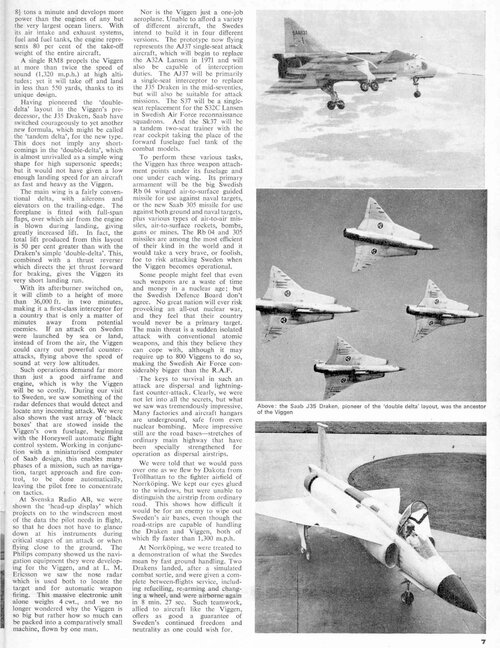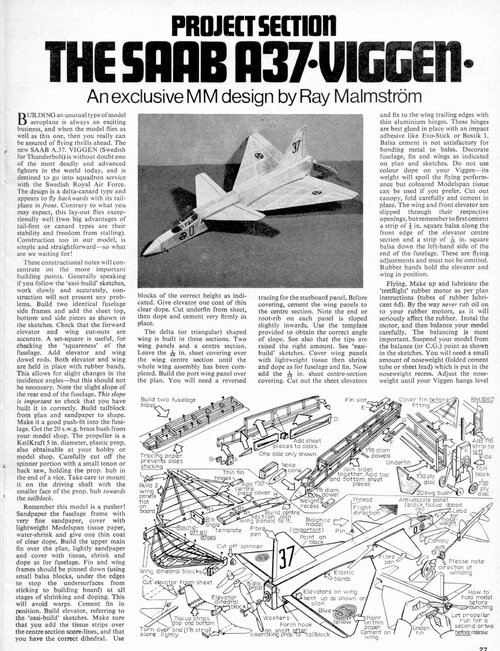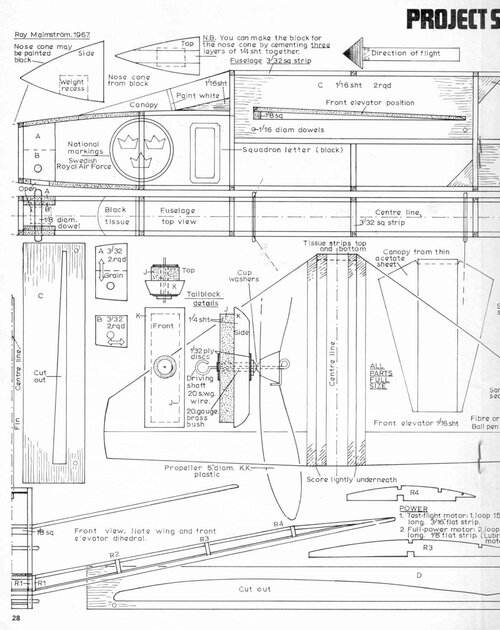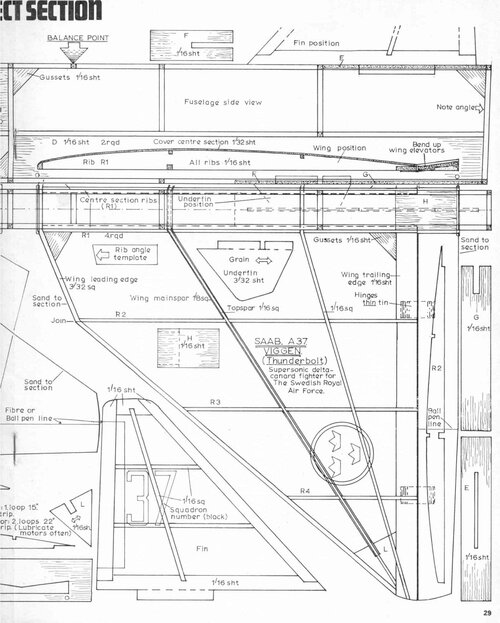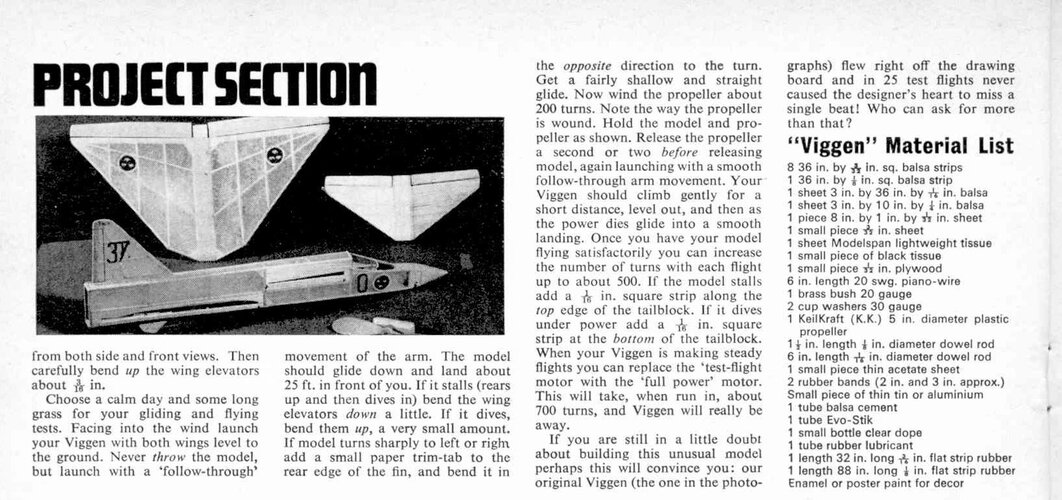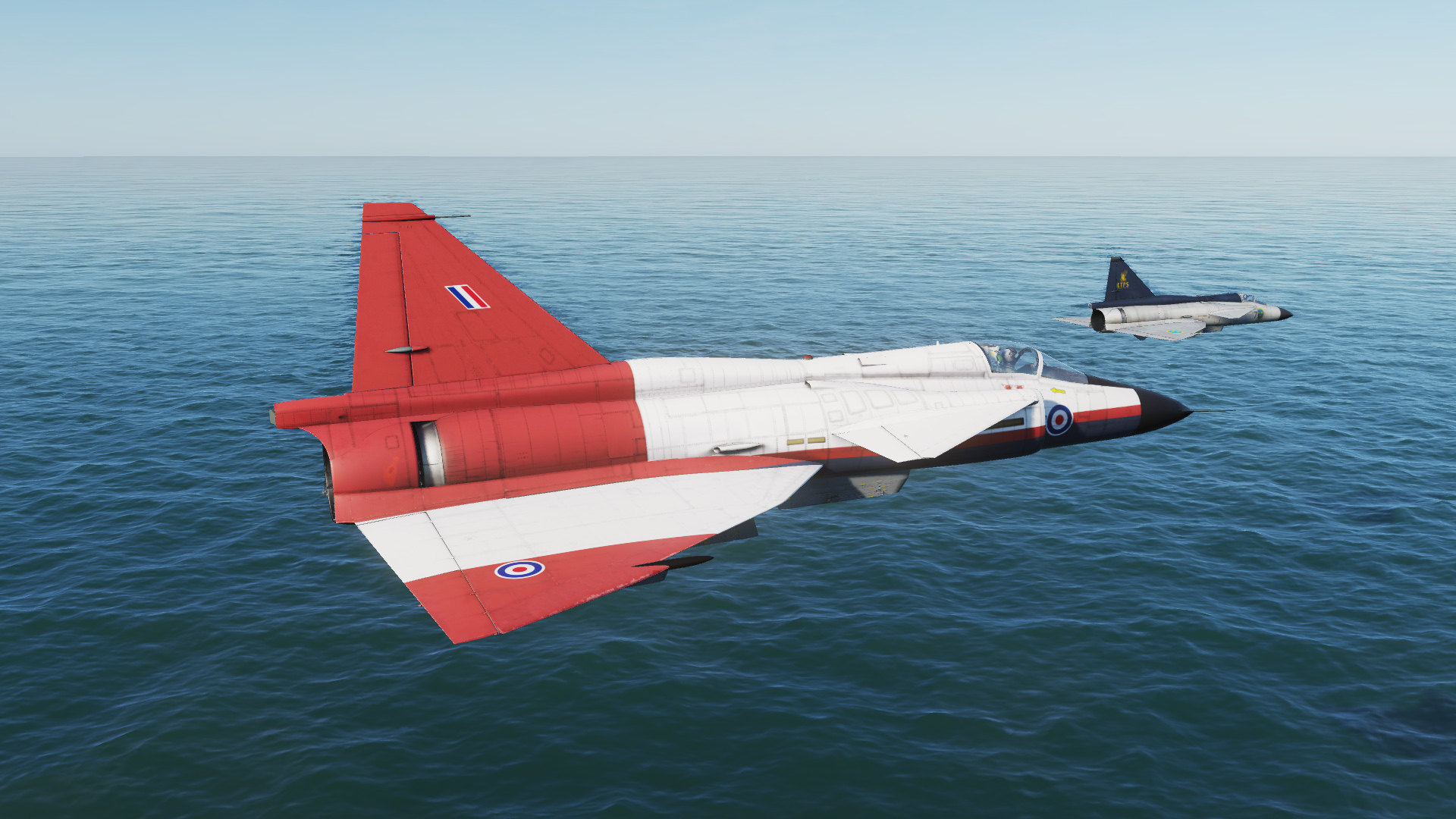- Joined
- 27 September 2006
- Messages
- 5,744
- Reaction score
- 5,633
The Meccano Magaxine in May 1967 contained an article by John Taylor about the Saab Viggen as well instructions on how to make a balsa wood flying model.
Taylor was very impressed by the Viggen. It went on to perform all the roles for which the RAF had to develop MRCA to do.
Sweden in the 1960s was much more neutral and non aligned than in later years of the Cold War. So a purchase of Viggens by the UK would have been impossible.
But Saab had close relations with British industry. In the period when the UK abandoned TSR2, F111 and then AFVG might not a British version of the Viggen have made sense?
With skilful cooperation it could have entered service by 1975 instead of the Jaguar and well before the Tornado.
Taylor was very impressed by the Viggen. It went on to perform all the roles for which the RAF had to develop MRCA to do.
Sweden in the 1960s was much more neutral and non aligned than in later years of the Cold War. So a purchase of Viggens by the UK would have been impossible.
But Saab had close relations with British industry. In the period when the UK abandoned TSR2, F111 and then AFVG might not a British version of the Viggen have made sense?
With skilful cooperation it could have entered service by 1975 instead of the Jaguar and well before the Tornado.

